Protozoan-Derived Cytokine-Transgenic Macrophages Reverse Hepatic Fibrosis
- PMID: 38247166
- PMCID: PMC10987136
- DOI: 10.1002/advs.202308750
Protozoan-Derived Cytokine-Transgenic Macrophages Reverse Hepatic Fibrosis
Abstract
Macrophage therapy for liver fibrosis is on the cusp of meaningful clinical utility. Due to the heterogeneities of macrophages, it is urgent to develop safer macrophages with a more stable and defined phenotype for the treatment of liver fibrosis. Herein, a new macrophage-based immunotherapy using macrophages stably expressing a pivotal cytokine from Toxoplasma gondii, a parasite that infects ≈ 2 billion people is developed. It is found that Toxoplasma gondii macrophage migration inhibitory factor-transgenic macrophage (Mφtgmif) shows stable fibrinolysis and strong chemotactic capacity. Mφtgmif effectively ameliorates liver fibrosis and deactivates aHSCs by recruiting Ly6Chi macrophages via paracrine CCL2 and polarizing them into the restorative Ly6Clo macrophage through the secretion of CX3CL1. Remarkably, Mφtgmif exhibits even higher chemotactic potential, lower grade of inflammation, and better therapeutic effects than LPS/IFN-γ-treated macrophages, making macrophage-based immune therapy more efficient and safer. Mechanistically, TgMIF promotes CCL2 expression by activating the ERK/HMGB1/NF-κB pathway, and this event is associated with recruiting endogenous macrophages into the fibrosis liver. The findings do not merely identify viable immunotherapy for liver fibrosis but also suggest a therapeutic strategy based on the evolutionarily designed immunomodulator to treat human diseases by modifying the immune microenvironment.
Keywords: Toxoplasma gondii; Toxoplasma gondii macrophage migration inhibitory factors; immunotherapy; liver fibrosis; macrophages; polarization.
© 2024 The Authors. Advanced Science published by Wiley‐VCH GmbH.
Conflict of interest statement
The authors declare no conflict of interests.
Figures

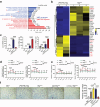
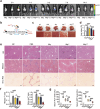

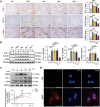
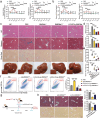

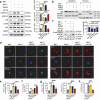

Similar articles
-
Biochemical and immunological characterization of Toxoplasma gondii macrophage migration inhibitory factor.J Biol Chem. 2013 May 3;288(18):12733-41. doi: 10.1074/jbc.M112.419911. Epub 2013 Feb 26. J Biol Chem. 2013. PMID: 23443656 Free PMC article.
-
TgMIF Promotes Hepatocyte Pyroptosis and Recruitment of Proinflammatory Macrophages During Severe Liver Injury in Acute Toxoplasmosis.J Infect Dis. 2023 Jun 15;227(12):1417-1427. doi: 10.1093/infdis/jiac422. J Infect Dis. 2023. PMID: 36281765
-
Activated Hepatic Stellate Cells Induce Infiltration and Formation of CD163+ Macrophages via CCL2/CCR2 Pathway.Front Med (Lausanne). 2021 Feb 5;8:627927. doi: 10.3389/fmed.2021.627927. eCollection 2021. Front Med (Lausanne). 2021. PMID: 33614685 Free PMC article.
-
Macrophage heterogeneity in liver injury and fibrosis.J Hepatol. 2014 May;60(5):1090-6. doi: 10.1016/j.jhep.2013.12.025. Epub 2014 Jan 8. J Hepatol. 2014. PMID: 24412603 Review.
-
MicroRNA: role in macrophage polarization and the pathogenesis of the liver fibrosis.Front Immunol. 2023 Apr 17;14:1147710. doi: 10.3389/fimmu.2023.1147710. eCollection 2023. Front Immunol. 2023. PMID: 37138859 Free PMC article. Review.
Cited by
-
The role and therapeutic targeting of the CCL2/CCR2 signaling axis in inflammatory and fibrotic diseases.Front Immunol. 2025 Jan 9;15:1497026. doi: 10.3389/fimmu.2024.1497026. eCollection 2024. Front Immunol. 2025. PMID: 39850880 Free PMC article. Review.
-
Toxoplasma gondii macrophage migration inhibitory factor shows anti-Mycobacterium tuberculosis potential via AZIN1/STAT1 interaction.Sci Adv. 2024 Oct 25;10(43):eadq0101. doi: 10.1126/sciadv.adq0101. Epub 2024 Oct 25. Sci Adv. 2024. PMID: 39453997 Free PMC article.
-
Hepatic stellate cell-derived microfibrillar-associated protein 2 prevents liver fibrosis by regulating extracellular matrix and inflammation.Theranostics. 2025 Mar 10;15(9):4033-4053. doi: 10.7150/thno.109771. eCollection 2025. Theranostics. 2025. PMID: 40213670 Free PMC article.
References
MeSH terms
Grants and funding
LinkOut - more resources
Full Text Sources
Molecular Biology Databases
Research Materials
Miscellaneous
